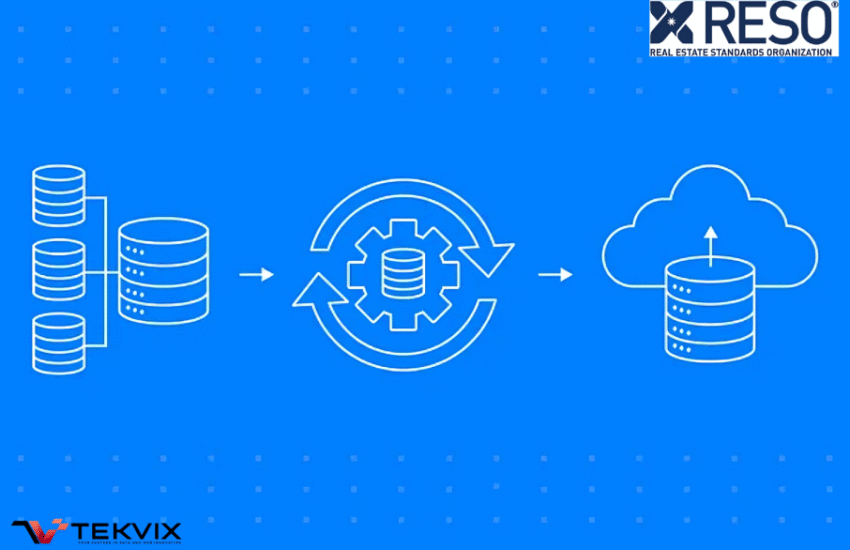In today’s data-driven real estate world, automation and integration are key to staying competitive. Real Estate Standards Organization (RESO) data is the backbone of many MLS (Multiple Listing Service) systems, and efficiently handling this data can unlock powerful insights for brokers, developers, and analysts.
In this blog, we’ll explore how to automate MLS RESO data pipelines using Python and MySQL — covering everything from understanding RESO metadata to incremental syncing and handling rate limits.
Understanding RESO Metadata

Before building any data pipeline, it’s crucial to understand RESO metadata — the blueprint that defines what your data looks like.
The RESO Web API is designed to standardize how MLS data is shared and consumed. Its metadata includes details about property listings, agents, offices, and other related entities. Each metadata object defines:
- Field names and types
- Lookup values (like property types or statuses)
- Relationships between entities
In essence, RESO metadata helps you dynamically map MLS data to your local database structure, ensuring that your schema always aligns with the MLS feed — even as it evolves.
Example:
ListingId, ModificationTimestamp, ListPrice, City, PostalCode, etc., come straight from the metadata schema. The script simply reads that structure and builds tables accordingly.
Dynamic Table Creation
Traditional ETL (Extract, Transform, Load) pipelines rely on fixed schemas. But MLS feeds change — new fields appear, data types evolve, and structures shift.
To solve this, we can use Python to dynamically create tables in MySQL based on the RESO metadata.
A simplified approach:
import mysql.connector
def create_table_from_metadata(metadata, table_name, conn):
cursor = conn.cursor()
columns = []
for field in metadata:
sql_type = “VARCHAR(255)” if field[‘Type’] == ‘String’ else “INT”
columns.append(f”{field[‘Name’]} {sql_type}”)
columns_sql = “, “.join(columns)
query = f”CREATE TABLE IF NOT EXISTS {table_name} ({columns_sql});”
cursor.execute(query)
conn.commit()
This approach ensures your database adapts automatically to any changes in the RESO structure — no manual intervention required.
Incremental Data Syncing
One of the biggest challenges in working with MLS data is keeping it updated efficiently. Full data refreshes can be time-consuming and costly.
That’s where incremental syncing comes in.
Instead of reloading everything, you only fetch records that have changed since your last sync. The RESO API often supports filters like ModificationTimestamp or LastUpdated.
from datetime import datetime, timedelta
last_sync = datetime.now() – timedelta(hours=1)
query = f”ModificationTimestamp gt {last_sync.isoformat()}”
This reduces bandwidth usage and ensures your local database always reflects the latest updates — fast and efficient.
Data Ingestion and Upsert Logic
Once you have the updated records, the next step is ingesting them into MySQL.
A robust approach is using upsert logic (update if exists, insert if not).
This ensures that duplicate entries are avoided while updates remain consistent.
Example snippet:
def upsert_data(conn, table, data):
cursor = conn.cursor()
for record in data:
columns = ‘, ‘.join(record.keys())
placeholders = ‘, ‘.join([‘%s’] * len(record))
updates = ‘, ‘.join([f”{col}=VALUES({col})” for col in record.keys()])
sql = f”INSERT INTO {table} ({columns}) VALUES ({placeholders}) ON DUPLICATE KEY UPDATE {updates}”
cursor.execute(sql, list(record.values()))
conn.commit()
This method makes your ingestion idempotent — meaning you can safely rerun it without causing duplication or inconsistencies.
Incremental Data Syncing
RESO APIs include a field called ModificationTimestamp, which is the key to syncing efficiently.
Each time the pipeline runs:
It checks the latest timestamp already stored in the database.
It requests only newer records from the API.
It updates or inserts those records into MySQL.
That makes the process incremental, lightweight, and safe to rerun anytime.
Data Ingestion and Upsert Logic
Once you have the updated records, the next step is ingesting them into MySQL.
A robust approach is using upsert logic (update if exists, insert if not).
This ensures that duplicate entries are avoided while updates remain consistent.
Example snippet:
def upsert_data(conn, table, data):
cursor = conn.cursor()
for record in data:
columns = ‘, ‘.join(record.keys())
placeholders = ‘, ‘.join([‘%s’] * len(record))
updates = ‘, ‘.join([f”{col}=VALUES({col})” for col in record.keys()])
sql = f”INSERT INTO {table} ({columns}) VALUES ({placeholders}) ON DUPLICATE KEY UPDATE {updates}”
cursor.execute(sql, list(record.values()))
conn.commit()
This method makes your ingestion idempotent — meaning you can safely rerun it without causing duplication or inconsistencies.
Handling Rate Limits
Most MLS APIs enforce rate limits to prevent excessive requests. If you exceed them, your pipeline could break or get temporarily blocked.
To handle this gracefully, consider:
- Batching API calls
- Caching responses when possible
- Implementing exponential backoff on retries
Here’s how the full system flows:
+———————+
| RESO API (MLSGrid)|
+———-+———-+
|
▼
+———————-+
| Python Data Pipeline |
| – Parse Metadata |
| – Fetch Updates |
| – Rate Limit Control |
+———-+———–+
|
▼
+———————-+
| MySQL Database |
| – Auto Table Create |
| – UPSERT Records |
+———————-+
This ensures your data flow remains smooth and resilient — even under strict API conditions.
Why This Approach Works
This Python-MySQL pipeline approach works because it’s:
- Scalable: Easily adapts as your MLS feed grows.
- Dynamic: Adjusts automatically to metadata changes.
- Efficient: Syncs only modified records.
- Reliable: Handles API limits and retries gracefully.
Moreover, by leveraging open-source tools like Python and MySQL, you maintain full control over your architecture without relying on expensive third-party ETL platforms.
Next Steps
Once your pipeline is running smoothly, consider adding:
- Data validation rules to ensure consistency.
- Logging and monitoring using tools like ELK Stack or Prometheus.
- Scheduling with Airflow or Cron for automated runs.
- Integration with BI tools (like Power BI or Tableau) for visualization.
These enhancements will transform your pipeline from a simple automation script into a full-fledged data ecosystem.
Conclusion
Automating MLS RESO data pipelines with Python and MySQL is not just a technical upgrade — it’s a strategic move towards data agility and operational efficiency.
By understanding RESO metadata, implementing dynamic schema creation, and handling incremental syncs intelligently, you can build a system that grows with your business — without constant manual effort.
If you’re looking to build robust, automated data pipelines or custom MLS solutions, Tekvix can help.
Our team specializes in web application development, data engineering, and automation systems designed to scale with your business.

Founder of Tekvix, brings 6 years of industry experience in web development with expertise in Python and JavaScript. He has contributed to diverse ML and web projects and now focuses on advancing AI solutions through Large Language Models (LLMs) and LangChains..

